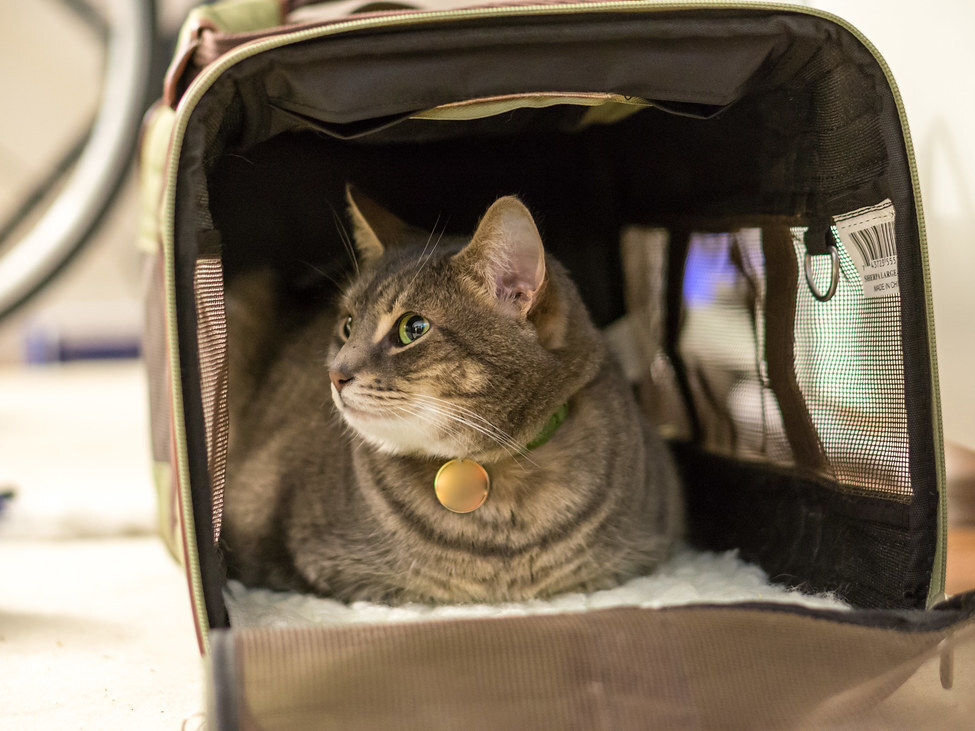Holiday Travel With Pets Part 1: Secrets To A Stress-Free Road Trip

Many families opt to bring their pets with them when they hit the road for the holidays. Whether it is a quick drive across town or a longer road trip, traveling with pets has the potential to bring about its own level of chaos.
Dr. Lori Teller, a clinical assistant professor at the Texas A&M College of Veterinary Medicine & Biomedical Sciences, offers some best practices for traveling in cars with pets and preparing for trips away from home.
“Before embarking on a long trip, owners should make sure their pet is comfortable with riding in the car,” Teller said.
The best way to ensure the safety of everyone in the vehicle is to properly secure pets in a carrier or pet car seat; loose animals can injure themselves and have the potential to distract the driver.
“It is not recommended that a dog ride with its head out of the window, because debris can easily get in their eyes, causing damage,” Teller said. “Dogs riding with their head out the window have also been known to easily get excited and jump/fall out of the car.”
Teller also advises that owners avoid having their dogs ride in the back of truck beds unless they are confined to an anchored-down carrier.
For longer car rides, owners should be mindful of their pet’s need for breaks. Similar to humans, dogs and cats need to stretch their legs after a few hours of being in the car.
How frequently these breaks occur will mostly depend on the health status and normal activity levels of the pet—more active dogs may need to get out more often and walk around.
“In general, it would be good to let the pet out every couple of hours to stretch, have a drink of water, and have the opportunity to go to the bathroom,” Teller said.
Cat owners also may look into purchasing travel litterboxes to cut down on bathroom breaks.
With longer car rides comes the potential of a pet experiencing motion sickness, leaving them extremely uncomfortable during the journey.
“There are prescription medications available to combat motion sickness, so it worth speaking with your veterinarian to determine what will be best for your pet and receive instructions on how to administer the drug,” Teller said.
During any form of travel, bringing a copy of the pet’s medical records, including proof of vaccination, can be particularly important if a pet becomes ill while on the road and needs to see a veterinarian.
In the unfortunate event that an owner and their pet get separated while traveling, “it is a good idea for owners to have a picture of their pet readily available,” Teller said. “This can be a helpful proof of ownership.”
Reconnecting with a lost pet also can be facilitated by ensuring pets are microchipped, with up-to-date contact information, and wear proper identification on their collar or tag, so if something does happen, the owner can be contacted.
Finally, it is good practice for owners to travel with all of their pet’s necessary supplies, including medications or special diets, as it may be hard to obtain anything beyond the basics while out-of-town.
As pet owners pack their bags this holiday season, taking the extra steps to ensure their pet’s safety during their travels will help to keep everyone’s spirits merry and bright.
Pet Talk is a service of the College of Veterinary Medicine & Biomedical Sciences, Texas A&M University. Stories can be viewed on the web at vetmed.tamu.edu/news/pet-talk. Suggestions for future topics may be directed to vmbs-editor@tamu.edu.


